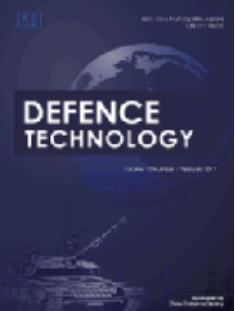Development and experimental validation of the dynamic constitutive model and equation of state for Mo-10Cu alloy
IF 5.9
Q1 ENGINEERING, MULTIDISCIPLINARY
引用次数: 0
Abstract
This study systematically investigates the mechanical response characteristics of Mo-10Cu pseudo-alloy under various conditions, including temperatures ranging from 298 K to 550 K, strain rates from 1 × 10−2 s−1 to 5.2 × 103 s−1, and dynamic impact loads from 134 m/s to 837 m/s. The investigation is conducted using a combination of multi-method crossover experiment and numerical simulations, with accuracy validated through X-ray testing and static penetration test. Using a universal testing machine, Split-Hopkinson Pressure Bar (SHPB) system, and a light-gas gun, the dynamic constitutive behavior and shock adiabatic curves of the alloy under complex loading conditions are revealed. Experimental results demonstrate that the flow stress evolution of Mo-10Cu alloy exhibits significant strain hardening, and strain-rate strengthening. Based on these observations, a Johnson-Cook (J-C) constitutive model has been developed to describe the material's dynamic behavior. Through free-surface particle velocity measurements, the shock adiabatic relationship was obtained, and a Gruneisen equation of state was established. X-ray experimental results confirm that the Mo-10Cu liner can generate well-formed, cohesive jets. The penetration test results show that the maximum penetration depth can reach 243.10 mm. The maximum error between the numerical simulation and the X-ray test is less than 7.70%, and the error with the penetration test is 4.73%, which confirms the accuracy of the constitutive parameters and the state equation. In conclusion, the proposed J-C model and Gruneisen equation effectively predict the dynamic response and jet formation characteristics of Mo-10Cu alloy under extreme loads. This work provides both theoretical support and experimental data for material design and performance optimization in shaped charge applications.
Mo-10Cu合金动态本构模型和状态方程的建立与实验验证
本文系统研究了Mo-10Cu伪合金在298 ~ 550 K温度、1 × 10−2 s−1 ~ 5.2 × 103 s−1应变速率和134 ~ 837 m/s动态冲击载荷下的力学响应特性。研究采用多方法交叉实验和数值模拟相结合的方法进行,并通过x射线测试和静态穿透测试验证了准确性。利用万能试验机、Split-Hopkinson压杆(SHPB)系统和光气枪,研究了复合加载条件下合金的动态本构行为和冲击绝热曲线。实验结果表明,Mo-10Cu合金流变应力演化表现出明显的应变硬化和应变速率强化。基于这些观察,Johnson-Cook (J-C)本构模型已经被开发用来描述材料的动态行为。通过对自由表面粒子速度的测量,得到了激波绝热关系,建立了Gruneisen状态方程。x射线实验结果证实,Mo-10Cu衬里可以产生形状良好的内聚射流。侵彻试验结果表明,最大侵彻深度可达243.10 mm。数值模拟与x射线试验的最大误差小于7.70%,与侵彻试验的最大误差为4.73%,验证了本构参数和状态方程的准确性。综上所述,J-C模型和Gruneisen方程能够有效预测Mo-10Cu合金在极端载荷下的动态响应和射流形成特性。这项工作为聚能装药的材料设计和性能优化提供了理论支持和实验数据。
本文章由计算机程序翻译,如有差异,请以英文原文为准。
求助全文
约1分钟内获得全文
求助全文
来源期刊

Defence Technology(防务技术)
Mechanical Engineering, Control and Systems Engineering, Industrial and Manufacturing Engineering
CiteScore
8.70
自引率
0.00%
发文量
728
审稿时长
25 days
期刊介绍:
Defence Technology, a peer reviewed journal, is published monthly and aims to become the best international academic exchange platform for the research related to defence technology. It publishes original research papers having direct bearing on defence, with a balanced coverage on analytical, experimental, numerical simulation and applied investigations. It covers various disciplines of science, technology and engineering.
 求助内容:
求助内容: 应助结果提醒方式:
应助结果提醒方式:


